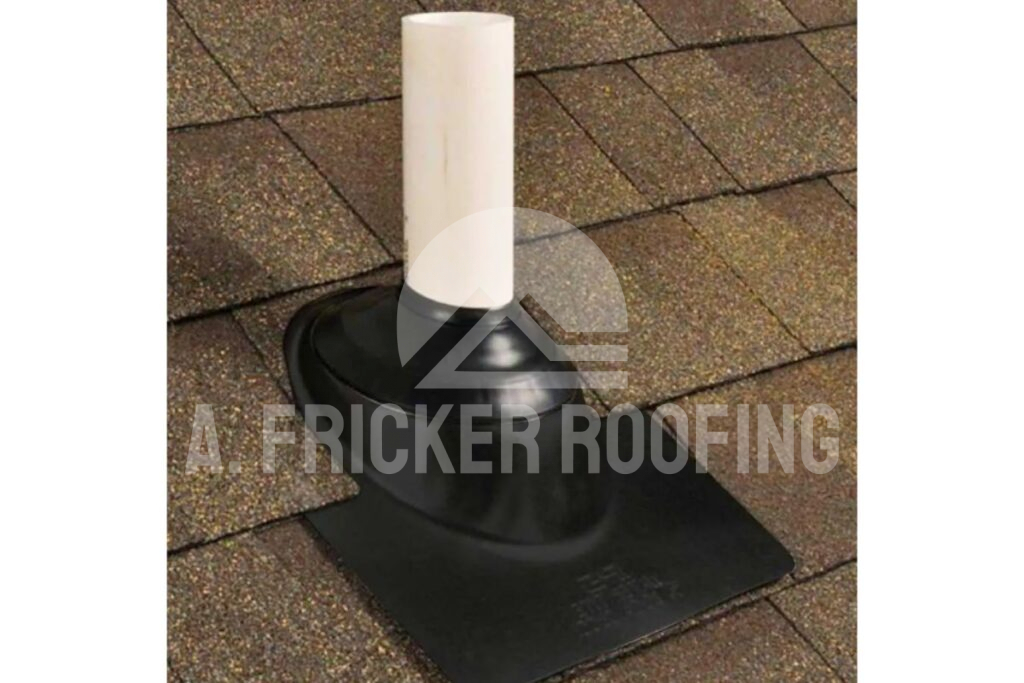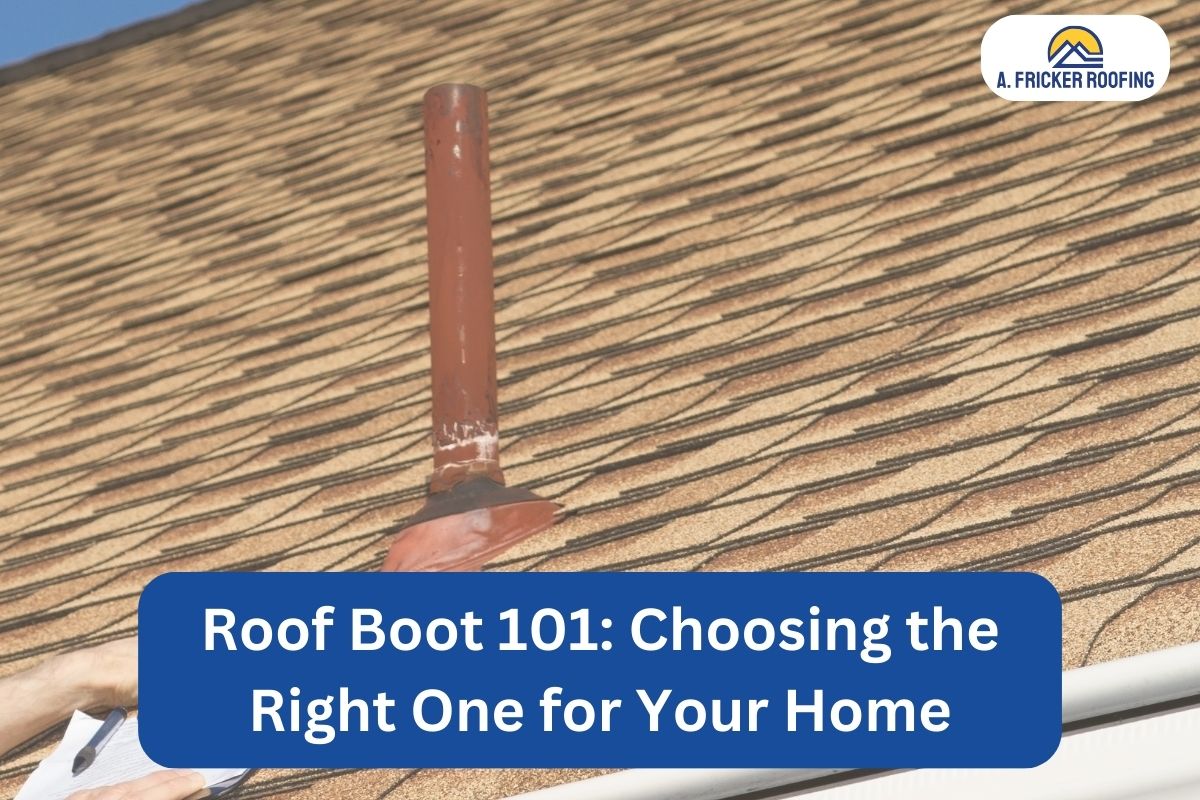Have you ever noticed the vent pipes protruding through your roof? The ones coming from your kitchen or bathroom? For these pipes to poke out through your roof, contractors need to cut a hole in your roof, which when left uncovered can allow water to leak in and penetrate the roofing materials. Though a flashing material made of rubber or metal is already installed around these pipes, that’s not enough.
To encase the area around the pipes, an additional cover is also installed, known as a roof boot or roof vent boot. Before getting into the details, let me be clear: these roof boots are different from what contractors wear when climbing the roof. In this blog post, we will discuss everything you need to know about roof boots, including why they are necessary for every home.
What Is A Roof Boot?

A roof boot is a flexible, weather-resistant covering designed to fit around vent pipes that penetrate the roof. Commonly made of different materials like rubber, metal, and plastic, its primary purpose is to create a waterproof seal around the pipes. Each material offers unique advantages, such as flexibility, durability, and resistance to UV rays. Snugly fit around plumbing pipes, these roof pipe boots prevent rainwater and debris from infiltrating the interior of your home. Their installation requires specific techniques to ensure a watertight seal around roof penetrations, making it a job for professionals, not DIY-ers.
However, despite their general durability, these roof boots sometimes become the cause of roof leaks. Rubber or plastic roof pipe boots can crack, become brittle, and expand due to temperature extremes and severe weather. Therefore, choosing the right material based on the climate in your area is crucial.
Materials Used for Roof Boots
The material you choose should depend on the weather conditions where you live and your personal preferences.
1. Rubber Roof Boots
Rubber is a common material for roof boots due to its flexibility and durability. Rubber roof boots are resistant to harsh weather conditions and UV rays. Their flexibility allows for a tight fit around vent pipes, ensuring a reliable seal that withstands the test of time.
2. Neoprene Roof Boots
Neoprene, a synthetic rubber, is known for its exceptional weather-resistance and thermal stability. Neoprene roof boots can withstand ozone and consistent sunlight, making them a durable option for areas with intense exposure to UV rays. They provide a reliable seal and are suitable for various climates.
3. Thermoplastic Roof Boots
Thermoplastic roof boots, often made of PVC (polyvinyl chloride) or TPO (thermoplastic olefin), offer excellent durability and resistance to chemical exposure. These boots are lightweight, easy to install, and maintain their integrity in both hot and cold temperatures.
4. Metal Roof Boots
Metal roof boots, often constructed from aluminum or galvanized steel, offer durability and longevity. These boots are resistant to corrosion and can withstand exposure to the elements. Metal roof boots are a popular choice for roofs with metal panels or in areas prone to severe weather conditions.
Importance of Roof Pipe Boots
Roof boots are very important when it comes to protecting your roof from water leaks.
1. Waterproofing and Leak Prevention
The primary function of roof boots is to create a watertight seal around vent pipes on the roof. Without proper casing, the area around the roof boot becomes a potential entryway for water, which can lead to leaks, damage, and compromised structural integrity. Roof boots, as also mentioned above, act as protective barriers, preventing rainwater and other environmental elements from infiltrating your home.
Also Read: A Closer Look at the Types of Roof Leaks and Their Causes
2. Protection of Interior Spaces
By preventing water infiltration, roof boots contribute significantly to preserving the interior spaces of your home. Protection of these vulnerable points is necessary as water damage can lead to mold growth, compromised insulation, and damage to ceilings, walls, and your belongings. On the other hand, a well-maintained and properly installed roof boot ensures that your living spaces remain dry and free from moisture damage.
How To Choose The Right Roof Boot For Your Home
These are the key factors to consider when choosing a roof boot:
1. The Local Climate
Considering your local climate is important when it comes to selecting any roofing materials, especially roof boots. Different weather conditions demand different properties from your roof boot. If you live in an area with extreme temperature variations, ensure that your chosen boot can withstand the temperature within the region. For example, in regions with heavy rainfall, prioritize a boot that can withstand prolonged exposure to moisture.
2. Evaluate Roof Slope Compatibility
The slope of your roof is a crucial factor in selecting the right roof boot. Ensure that the boot you choose is suitable for the specific pitch of your roof. Some boots are designed to accommodate various roof slopes, while others are more specialized. A proper fit contributes to the effectiveness of the seal and prevents potential leaks.
3. Material Matters
As mentioned above, roof boots are made of various materials, including rubber, neoprene, thermoplastic, and metal, with each material having unique properties. Examine your roof, assess the local area weather, and choose the most compatible roofing boot material. Also, consider your roof type, your preferences, and, most importantly, your budget and lifespan of the roof boot.
4. Proper Sizing
Most roof leaks occur because of the improper sizing of the roof boot. Do you want roof boots to fit perfectly on your roof? Choose the correct size! Measure the diameter of your vent pipe accurately before making a purchase. Roof boots come in different sizes to accommodate various pipe diameters, so selecting the right size is crucial for an effective seal.
5. Installation Ease
Consider the ease of installation, especially if you’re planning a DIY project. Some roof boots are designed for easy installation with features like hinged designs or adjustable collars. However, if you’re unsure about the installation process, it’s recommended to hire a professional to ensure a secure and watertight fit.
Conclusion
Given the range of roof pipe boots available, it’s crucial to know how to make the right choice. Installation problems often arise from choosing the wrong size or material for the roof boot, so make sure to assess your specific needs before making a final decision.
Remember, they come in various materials and types, each suited to different roofs and climates. Picking the right one and maintaining it is key. Overlook the roof boot, and you’re inviting water damage.
Hire Professional Roofers In Tulsa For Your Roofing Needs
If you are thinking of installing a roof boot or replacing an existing one, contact the professional roofers at A. Fricker Roofing & Waterproofing – a leading roofing company in Tulsa. The roofers at the company are proficient at handling any roofing job, be it a new roof installation, a complete roof replacement, or a roof repair.
Contact us today at (918) 402-7167 to consult a professional roofer.

